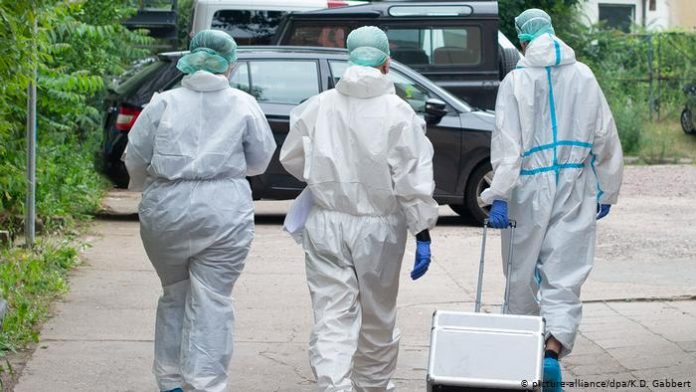Around 1.7 million people will soon be advised to shield themselves from coronavirus, and 820,000 of those will be moved up the priority list for a Covid-19 vaccination.
A new data-driven model, based on coronavirus outcomes from the first wave, has identified hundreds of thousands of people with a combination of conditions which means they are at higher risk than previously thought.
Many of these people will be moved up to the sixth priority group for a vaccination, members of which are currently being offered jabs, but many others will already have been vaccinated due to being considered vulnerable to the virus.
The 820,000 who have not already received a vaccine will get one “as quickly as possible”, said Dr Jenny Harries, deputy chief medical officer for England.
Letters will be sent out to alert people they could benefit from shielding, however recipients will have the choice over whether they want to shield.
The new model is being used in England only, though devolved administrations have access to the evidence it uses.
The Department for Health says the model is over-cautious and may alert some people to a risk they do not believe is worth shielding for.
Those who do chose to shield will qualify medical and supermarket deliveries through their Local Authority, as well as and statutory sick pay.
The original shielding list was made up of people with conditions that health experts assumed would put them at risk. However, at the inception of the list, there was no data on which to base it.
Around 2.2 million people are currently on the list in England, many of whom were identified for a single reason, such as specific cancers, people on immunosuppression drugs or those with severe respiratory conditions.
The additional 1.7 million will bring the number on the list to almost four million.
The new model, developed by New and Emerging Respiratory Virus Threats Advisory Group (Nervtag) and Oxford University, looks at the conditions of people who caught coronavirus in the first wave and suffered negative outcomes or death.
The model considers a range of factors including age, ethnicity, body mass index (BMI), other health conditions and also postcode, which is indicative of levels of deprivation.
A letter to GPs from NHS England, seen by the Health Service Journal, said a “new data-driven risk assessment… has been developed to help identify people who may be at high risk from Covid-19. It has been used at a national level to help identify an additional group of patients with specific multiple risk factors which, combined, may put them at similar risk to those who are clinically extremely vulnerable to severe outcomes. As a precautionary measure, this group will now be added to the shielded patient list (SPL), on the advice of the chief medical officer.”
The model has been lauded by experts for its swift development, with an equivalent usually taking ten years to create.
Dr Harries said: “We have a new, evidence-based, data-driven, predictive risk model which allows us to identify adults with multiple risk factors that make them more vulnerable to Covid-19.
“We can now identify additional people and help protect them now and in the future.”
She said the approach was “risk averse” to “protect as many people as possible”.








